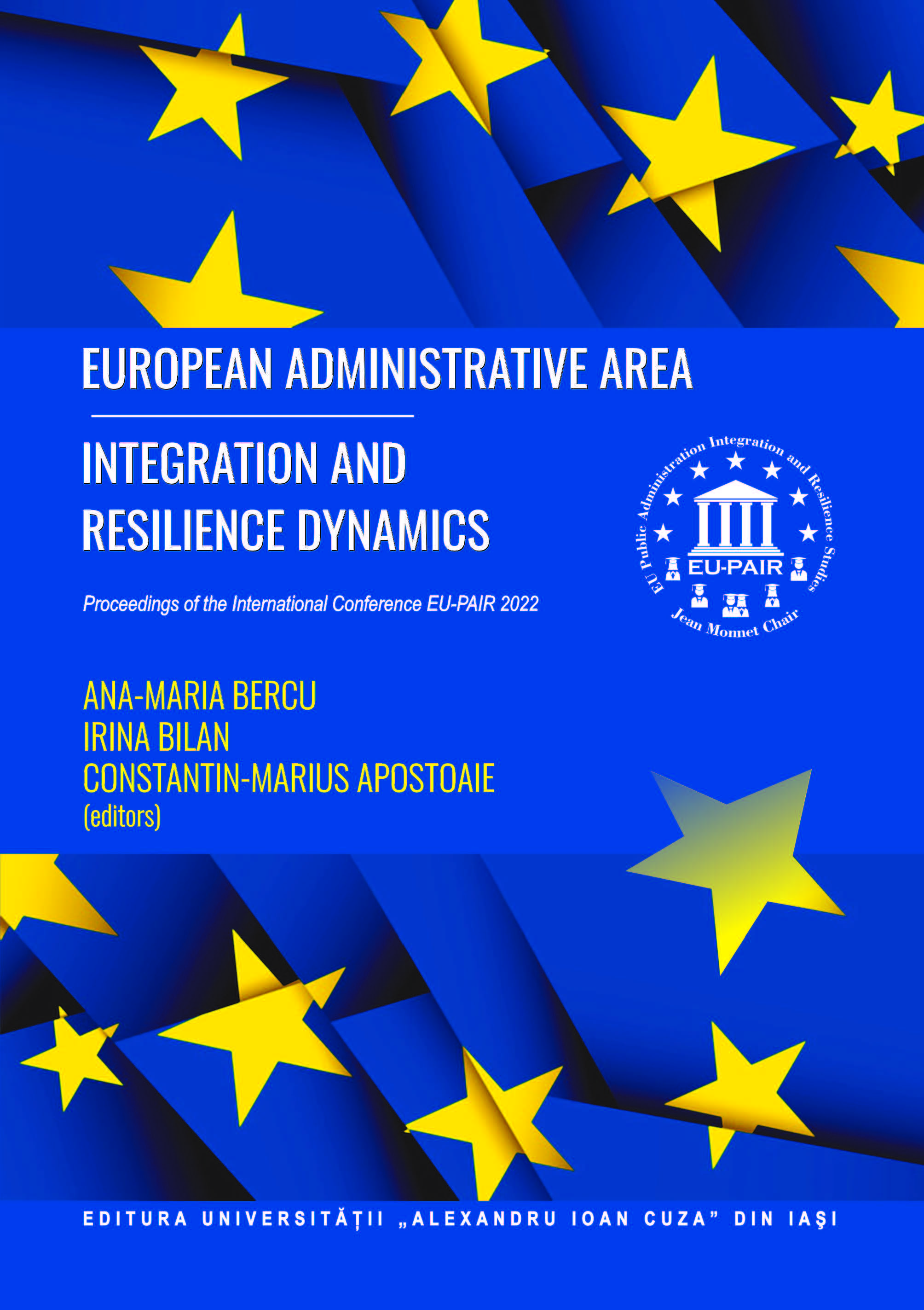THE NATIONAL INSTITUTIONAL FRAMEWORK FOR IMPLEMENTING THE EUROPEAN FUNDS IN ROMANIA. A COMPARATIVE ANALYSIS BETWEEN THE LAST TWO PROGRAMMING PERIODS: 2007-2013 AND 2014-2020
THE NATIONAL INSTITUTIONAL FRAMEWORK FOR IMPLEMENTING THE EUROPEAN FUNDS IN ROMANIA. A COMPARATIVE ANALYSIS BETWEEN THE LAST TWO PROGRAMMING PERIODS: 2007-2013 AND 2014-2020
Author(s): DIANA-ELENA ABALAȘEI, Liviu-George Maha
Subject(s): Politics / Political Sciences, Politics, Economy, EU-Approach / EU-Accession / EU-Development, Fiscal Politics / Budgeting
Published by: Editura Universităţii »Alexandru Ioan Cuza« din Iaşi
Keywords: European Funds; institutional framework; EU funds absorption process;
Summary/Abstract: Starting with 2007, Romania has benefitted from the European funding system, covering the 2007-2013 and 2014-2020 budgetary periods. Although it is among the EU Member States with the highest financial need for accelerating the economic and social development process, in the 2007-2013 programming period, Romania failed to maximize the impact of the European funds, having, practically, the lowest absorption rate among all the beneficiaries. Between the reasons that led to the achievement of this result, we can include some institutional and administrative factors that hindered both the access to European funds, as well as their effective use during the projects’ implementation period. Considering that the experience of the first budgetary cycle can be considered a relevant and useful lesson for creating the conditions for a more efficient use of the European funds in the 2014-2020 multi annual financial framework, the purpose of this paper is to emphasize the institutional measures and changes that took place in order to ensure a smooth process for attracting and effectively using these financial instruments during the current programming period. Thus, we compared the two programming periods from the institutional point of view, to determine what measures have been taken so far and whether they were successful, taking into account all the stages of this process, from the project preparation to implementation and reporting phases.
- Page Range: 11-29
- Page Count: 19
- Publication Year: 2022
- Language: English
- Content File-PDF

